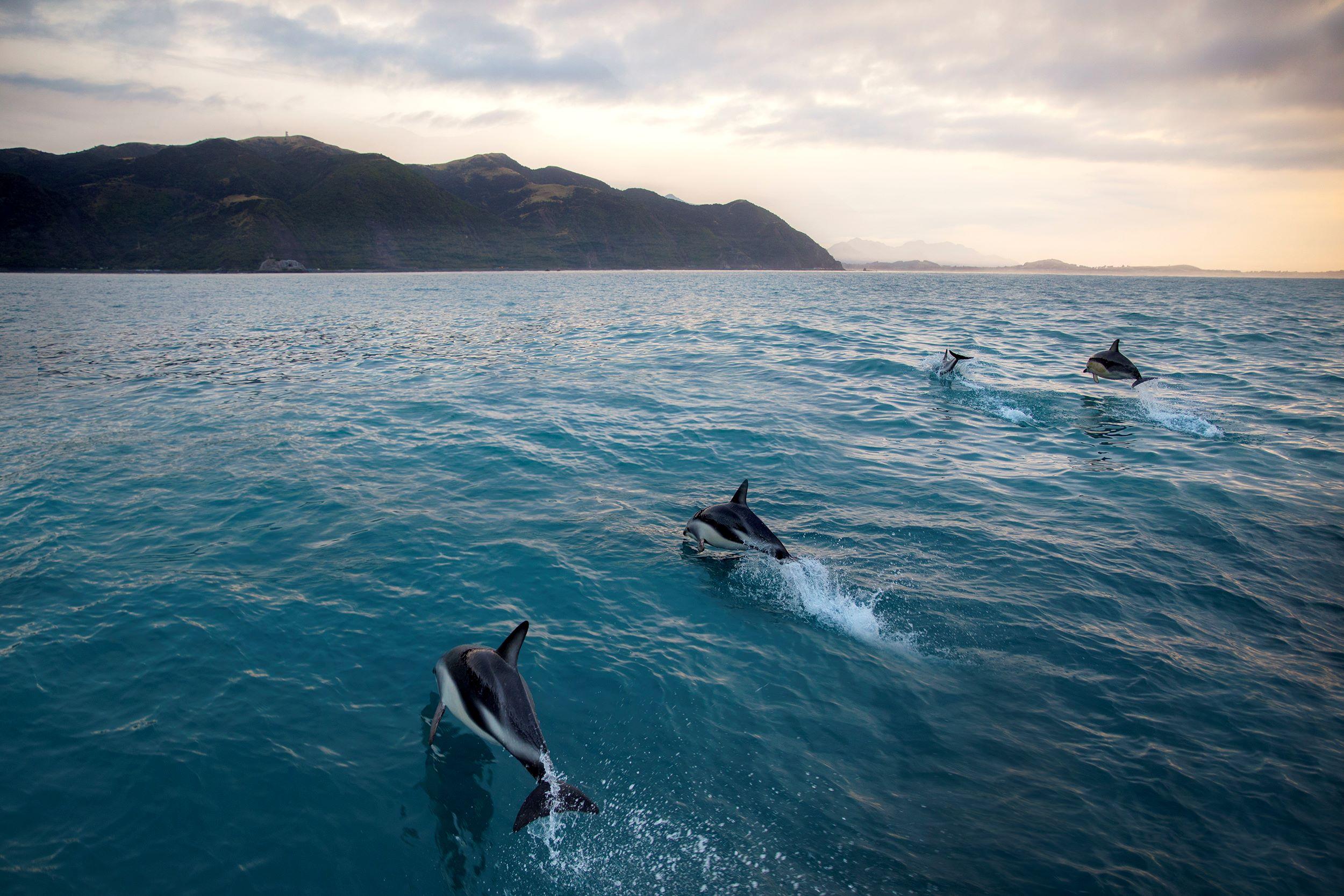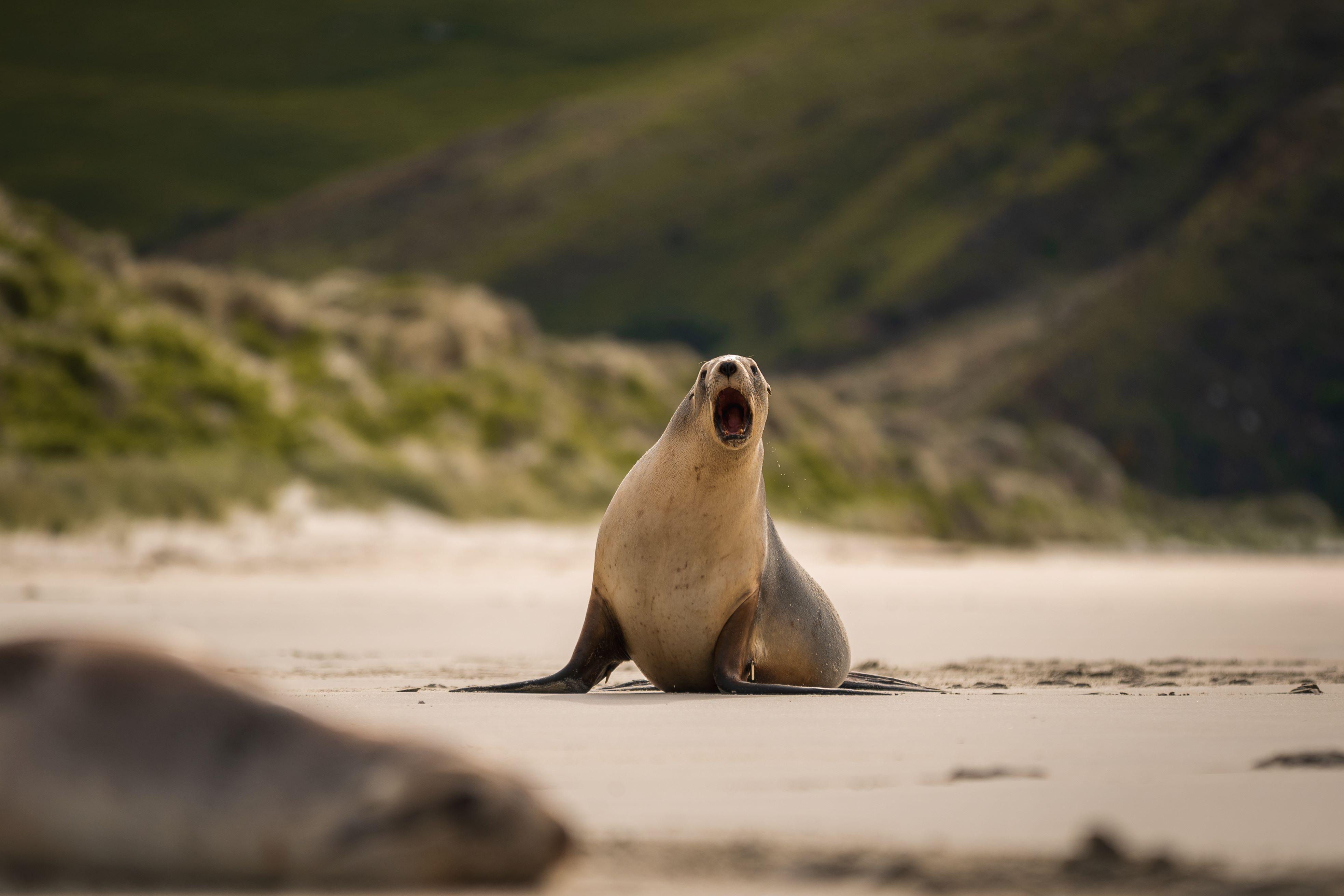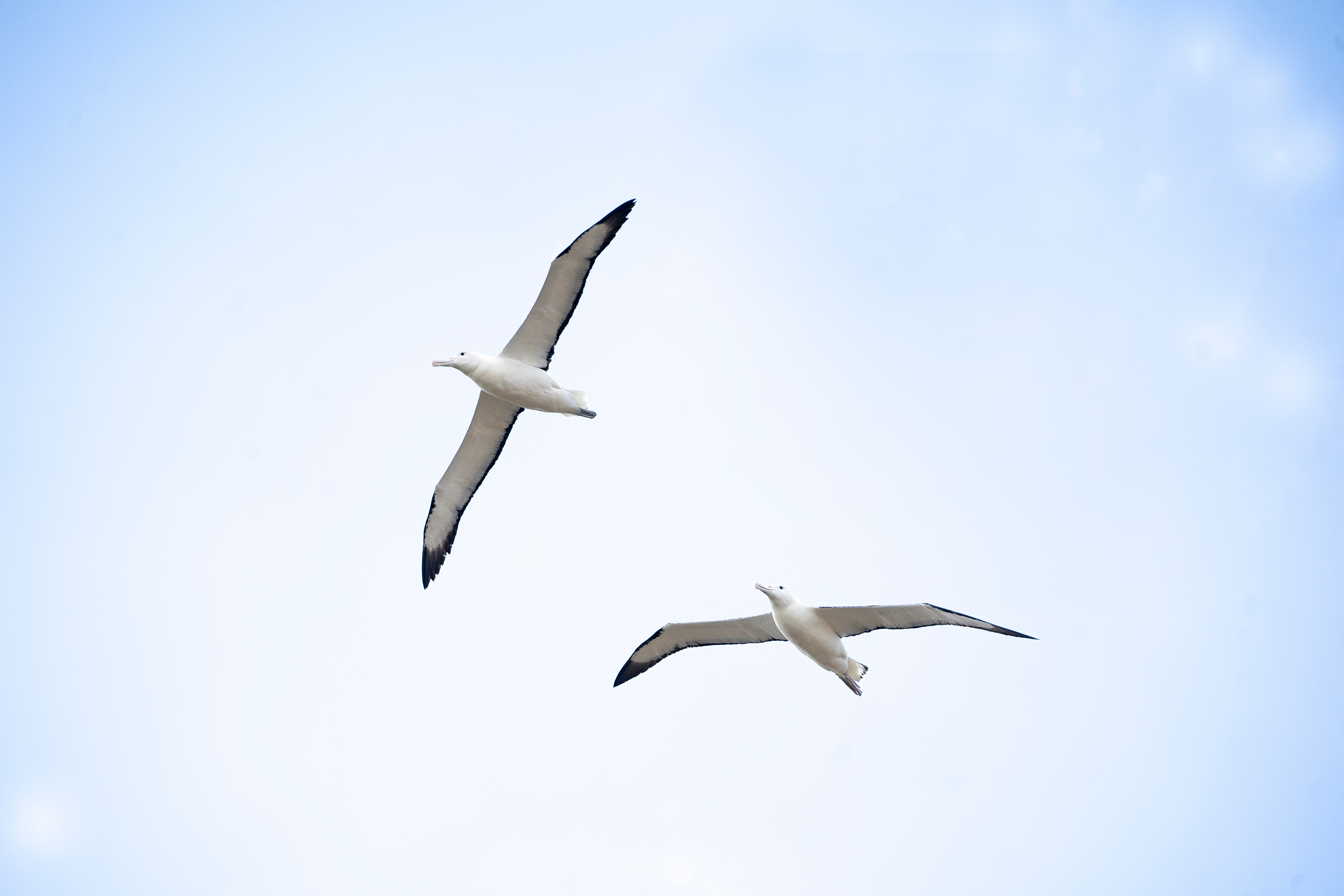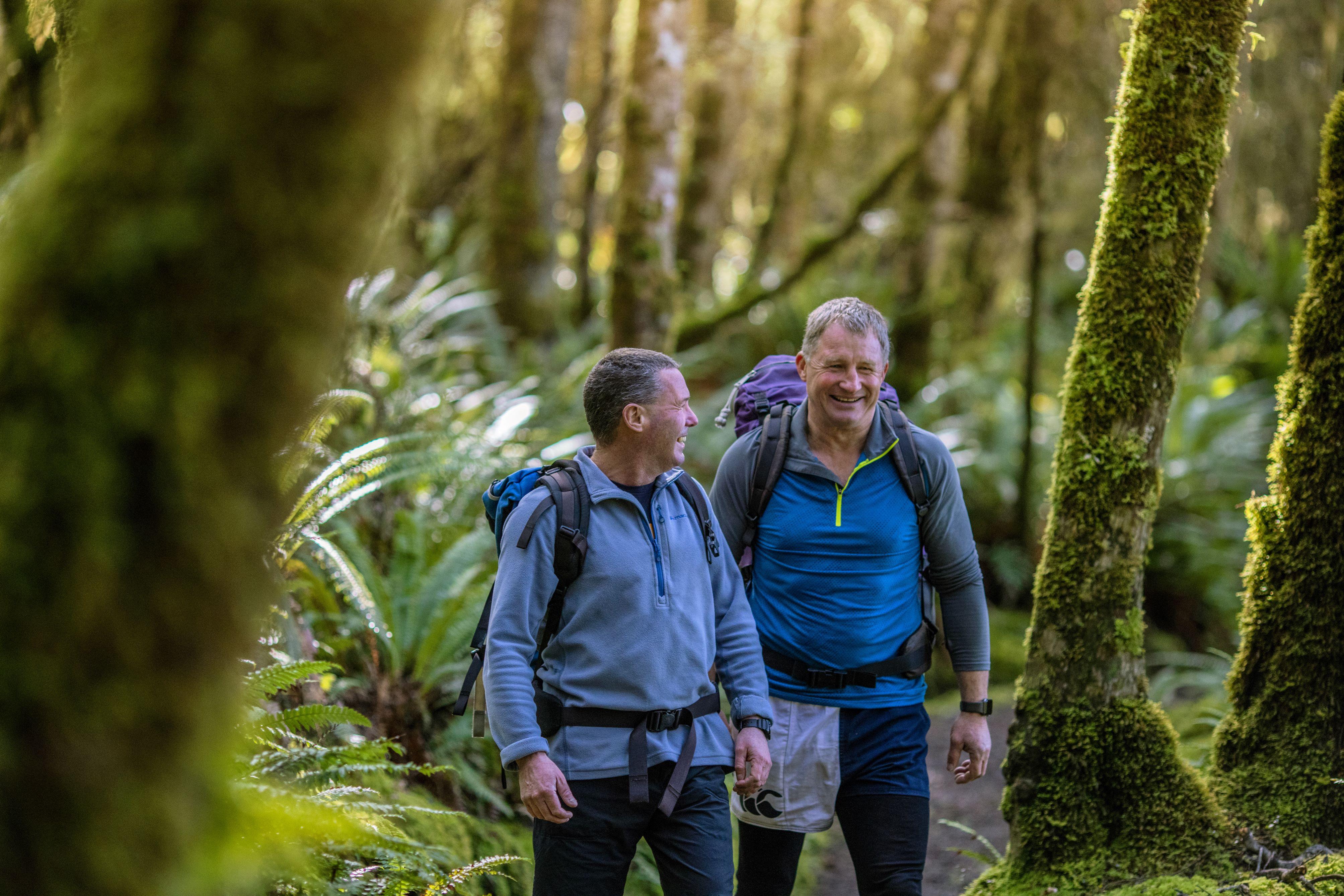Experience the Wonders of New Zealand’s Wildlife
New Zealand Nature & Wildlife Tours offer an unforgettable journey into some of the world's most extraordinary landscapes and ecosystems. Our tours are thoughtfully designed to immerse you in everything from majestic mountains and lush rainforests to serene coastlines and remarkable geothermal areas. Along the way, you’ll encounter rare and captivating wildlife, including species found nowhere else on Earth, all while enjoying sustainable and eco-friendly experiences.
Catering to every kind of adventurer, our tours range from leisurely nature walks through stunning national parks to exhilarating marine expeditions with dolphins, seals, and whales. Whether you are passionate about birdwatching, nature photography, or creating custom family adventures, New Zealand Nature & Wildlife Tours provide opportunities to make lasting memories surrounded by nature’s finest wonders.
Unique Wildlife Encounters Across New Zealand
Some of New Zealand’s most magical experiences include gazing at thousands of glowworms on a peaceful boat ride through the Waitomo Caves or spotting rare birds such as the takahe and kokako on Tiritiri Matangi Island. You can dive into the pristine waters of the Bay of Islands or Akaroa to swim alongside playful dolphins, or head out after dark on Stewart Island for an unforgettable chance to see the elusive kiwi in its natural habitat.
Wildlife lovers will also be thrilled by the sight of majestic albatrosses at Taiaroa Head, home to the world's only mainland breeding colony. Get close to adorable fur seals at Kaikoura’s Ohau Point, witness mighty sperm whales offshore, or interact with the cheeky kea parrots in the South Island’s alpine regions. From penguin parades at the Otago Peninsula to ancient tuatara encounters in Invercargill, every moment spent on these tours deepens your connection with New Zealand’s unique wildlife and landscapes.
Whale and dolphin watching is a popular and thrilling experience for nature lovers visiting New Zealand. Here's a comprehensive overview for this sub-section:
Best Places for Whale and Dolphin Watching: New Zealand is rich with marine wildlife. Places like Kaikoura, Bay of Islands, Hauraki Gulf, and Marlborough Sounds are known for their regular sightings of whales and dolphins.
Whale Species: The most commonly sighted whales include sperm whales, southern right whales, humpback whales, and occasionally orcas.
Dolphin Species: Commonly seen dolphins include the bottlenose dolphin, common dolphin, dusky dolphin, and the rare and small Hector's dolphin, one of the world's smallest marine dolphins found only in New Zealand.
Guided Tours: Mention various boat tours that offer whale and dolphin watching, including details about their duration, cost, and what they offer. It’s important to recommend eco-friendly and responsible operators.
Best Time to Go: While some whales can be seen year-round (like the sperm whales in Kaikoura), others are seasonal. Dolphins can generally be seen throughout the year.
Rules and Regulations: Highlight the regulations in place to protect these marine mammals, like keeping a safe distance, limiting time spent near them, and not interfering with their natural behaviour.
What to Expect: Remind visitors that while the chances of seeing whales and dolphins are high with reputable tour operators, these are wild animals in their natural habitat, and sightings can never be 100% guaranteed.
Responsible Tourism: Emphasize the importance of responsible tourism. Visitors should choose tours that have a minimal impact on the environment and contribute to local conservation efforts.
Safety and Preparations: Offer practical advice to prepare for a whale and dolphin watching tour, such as clothing to wear, items to bring (like a hat, sunscreen, and camera), and precautions for those who may experience seasickness.

Seal, penguin, and sea lion encounter tours in New Zealand offer unique opportunities to observe and interact with these fascinating marine animals in their natural habitats. Here are some popular destinations and experiences for seal, penguin, and sea lion encounters:
Otago Peninsula (Dunedin): Visit the Otago Peninsula, home to several colonies of New Zealand fur seals and the rare, yellow-eyed penguins. Take a guided tour to view these animals from a respectful distance and learn about their behavior and conservation.
Stewart Island/Rakiura: Explore Stewart Island to encounter New Zealand fur seals, which can often be found lounging on the rocky shores. Take a guided tour or hike to observe them in their natural habitat.
Kaikoura: Kaikoura is not only known for its whale watching but also for its resident New Zealand fur seal colony. Take a walk along the Kaikoura Peninsula Walkway to see these playful seals up close.
Milford Sound: Take a scenic cruise through Milford Sound, where you may spot fur seals basking on the rocks or swimming in the fjord's pristine waters. Some tours may offer closer encounters with these inquisitive marine mammals.
Akaroa: Join a tour in Akaroa to observe the adorable and rare Hector's dolphins, often referred to as New Zealand's "little dolphins." These small and friendly dolphins can be seen swimming alongside the boats during the tours.
Stewart Island Ulva Island: Take a guided tour to Ulva Island, a predator-free sanctuary near Stewart Island, where you can see penguins, including the iconic little blue penguins, as well as fur seals and sea lions.
When participating in seal, penguin, and sea lion encounter tours, it's crucial to respect the animals' space and follow the guidelines provided by tour operators to ensure their welfare and conservation.

Diving and snorkeling excursions are a great way to explore New Zealand's rich marine environment. This island nation is surrounded by diverse marine ecosystems, from kelp forests to coral reefs, which host a wide variety of marine life. Here are some key points for this sub-section:
Best Locations: Some of the best places for diving and snorkeling include the Poor Knights Islands Marine Reserve in Northland, the Goat Island Marine Reserve near Leigh, the Bay of Islands, Fiordland’s Marine Reserves, and the waters around the offshore islands like the Kermadec, Chatham, and Stewart Islands.
Marine Life: Depending on the location and time of year, divers and snorkelers can encounter a variety of marine life, including diverse species of fish, octopuses, stingrays, dolphins, seals, and occasionally whales. There's also a wealth of smaller creatures like starfish, sea urchins, anemones, and nudibranchs.
Coral Reefs and Kelp Forests: While New Zealand is not known for coral reefs like tropical destinations, it does have areas of cold-water corals and spectacular kelp forests, which provide habitats for many species and are fascinating to explore.
Diving Levels: There are options for all levels, from beginners to advanced divers. Many locations offer PADI courses for those looking to get certified or improve their skills. There are also numerous snorkeling spots suitable for families and less experienced snorkelers.
Safety and Regulations: It's crucial to follow safety guidelines when diving and snorkeling, including never diving alone, checking equipment, and being aware of local conditions and marine hazards. Visitors should also be aware of regulations in marine reserves, where fishing and the collection of any marine life are prohibited.
Marine Conservation: Divers and snorkelers have a unique opportunity to learn about and contribute to marine conservation. Many operators offer eco-tours and involve visitors in citizen science projects or clean-up dives.
Underwater Photography: New Zealand's underwater environments offer excellent opportunities for underwater photography. Some operators offer specialist photography tours, and many offer equipment hire.
Remember, the underwater environment is sensitive and easily damaged, so it's important to encourage responsible behaviour, such as not touching or standing on corals, not disturbing wildlife, and not leaving any litter.

Birdwatching in New Zealand is a delightful experience given the country's unique avian species, many of which are not found anywhere else in the world. These tours provide unique opportunities to observe and learn about the country's extraordinary avian species, many of which are endemic.
- Tiritiri Matangi Island Tours: A predator-free island near Auckland, home to a variety of rare and endangered bird species including takahe, kokako, and kiwi.
- Kaikoura Albatross Encounter: Located on the South Island, Kaikoura offers boat tours to see the magnificent albatrosses, petrels, and other seabirds.
- Stewart Island Kiwi Encounter: A nocturnal tour that provides the opportunity to spot the elusive kiwi in the wild.
- Zealandia Ecosanctuary Tours: Located in Wellington, Zealandia is a must-visit for bird enthusiasts, offering guided day and night tours to see species like the kaka and takahe.
- Kapiti Island Nature Tours: A visit to this predator-free reserve gives you a chance to see birds like the little spotted kiwi, kereru, and bellbird.
- Orokonui Ecosanctuary Tours: Near Dunedin, this sanctuary offers the chance to see rare birds like the South Island kaka and the yellowhead.
- Fiordland Penguin Tours: On the remote southwest coast, these tours provide the chance to see rare Fiordland Crested Penguins.
Birdwatching tours in New Zealand not only enable you to witness rare and fascinating bird species but also contribute to their preservation, as many tour companies participate in conservation efforts. Whether you're a serious birdwatcher or a nature enthusiast, these tours offer unforgettable experiences.

Rainforest expeditions in New Zealand can offer visitors the chance to explore unique ecosystems teeming with diverse flora and fauna. Here are some highlights for this section:
Locations: New Zealand's rainforests, often referred to as 'bush', can be found throughout the country but are particularly prominent in areas like the West Coast of the South Island, the Coromandel Peninsula, Northland, and Fiordland.
Guided Walks and Hikes: There are numerous guided tours available which offer a chance to explore these rainforests while learning about the ecosystem from knowledgeable guides. These can range from easy walks to multi-day hiking adventures.
Flora and Fauna: Visitors can see unique New Zealand flora such as kauri, rimu, totara, and nikau palms, as well as an array of ferns, mosses, and lichens. The fauna includes birds like the kiwi, kaka, tui, bellbird, and kea, as well as unique invertebrates like the wētā.
Tree-top Walks: Some locations, like the West Coast's Hokitika Gorge, offer tree-top walkways that allow visitors to experience the rainforest from the canopy level.
Conservation Education: Many rainforest expeditions have a strong educational focus, teaching visitors about the importance of conservation and the threats these ecosystems face, such as introduced pests and deforestation.
Adventure Activities: There are a number of adventure activities that can be incorporated into a rainforest expedition, such as zip-lining, canyoning, or even heli-hiking.
Safety and Preparedness: It's important to stress safety and preparedness, including appropriate clothing and footwear, weather considerations, and respecting the natural environment.
Cultural Significance: In many areas, there is a significant Māori cultural history connected to the rainforests, which can be included in the expedition experience.
As with all nature activities, it's crucial that visitors respect these unique environments, sticking to tracks, not disturbing wildlife, and leaving no trace of their visit.

New Zealand sits on the Pacific Ring of Fire, a belt of volcanic and seismic activity. This results in a variety of geothermal wonders and volcanic landscapes that are fascinating to explore. Here are some examples:
Rotorua Geothermal Parks: Rotorua is internationally renowned for its incredible geothermal activity. Visit the following parks to witness geysers, mud pools, and steaming volcanic terrains.
- Wai-O-Tapu: Provides access to unique volcanic features including the world-famous Champagne Pool, the mesmerizingly vivid colours of the Artist's Palette, the boiling Mud Pool, and the daily eruption of the Lady Knox Geyser.
- Te Puia: It's home to the New Zealand Māori Arts and Crafts Institute and the world-famous Pohutu geyser, which erupts up to 20 times a day. Visitors can also see boiling mud pools, explore native bushes and walkways, and discover traditional Māori architecture.
- Whakarewarewa Living Maori Village: Here, you can learn about how the Māori people utilize geothermal resources in daily life, from cooking in the steamy hot pools to bathing in the therapeutic waters.
- Waimangu Volcanic Valley: This area was created from the eruption of Mt. Tarawera. Here, you can explore geothermal sites such as the Frying Pan Lake and Inferno Crater.
- Hell's Gate/Tikitere: This geothermal park and spa in Rotorua offers mud baths, sulphur spas, and a landscape filled with geothermal features.
- Geothermal Walks in Kuirau Park: Located in downtown Rotorua, this park offers free access to view boiling mud pools, steaming lakes, and thermal foot baths.
- Mount Tarawera: This volcano is known for its massive eruption in 1886. Guided tours offer the chance to hike the volcano and learn about its history and effects on the local landscape and people.
Tongariro National Park: This park is home to several active and dormant volcanoes, including Mt. Tongariro and Mt. Ruapehu. The Tongariro Alpine Crossing is one of the best ways to explore this volcanic landscape.
Hot Water Beach, Coromandel Peninsula: At this beach, you can dig your own hot pool in the sand at low tide, thanks to underground hot springs that filter up to the surface.
Lake Taupo: This lake is actually a caldera, the result of a massive volcanic eruption. The area around it, including the stunning Huka Falls, offers many signs of geothermal activity.
Mount Taranaki/Egmont: This nearly perfect conical volcano offers numerous trails, leading to a spectacular summit view, and is surrounded by lush, verdant rainforests.
These sites not only allow visitors to witness the forces of nature at work, but also to learn about the geological history and processes that have shaped New Zealand.

